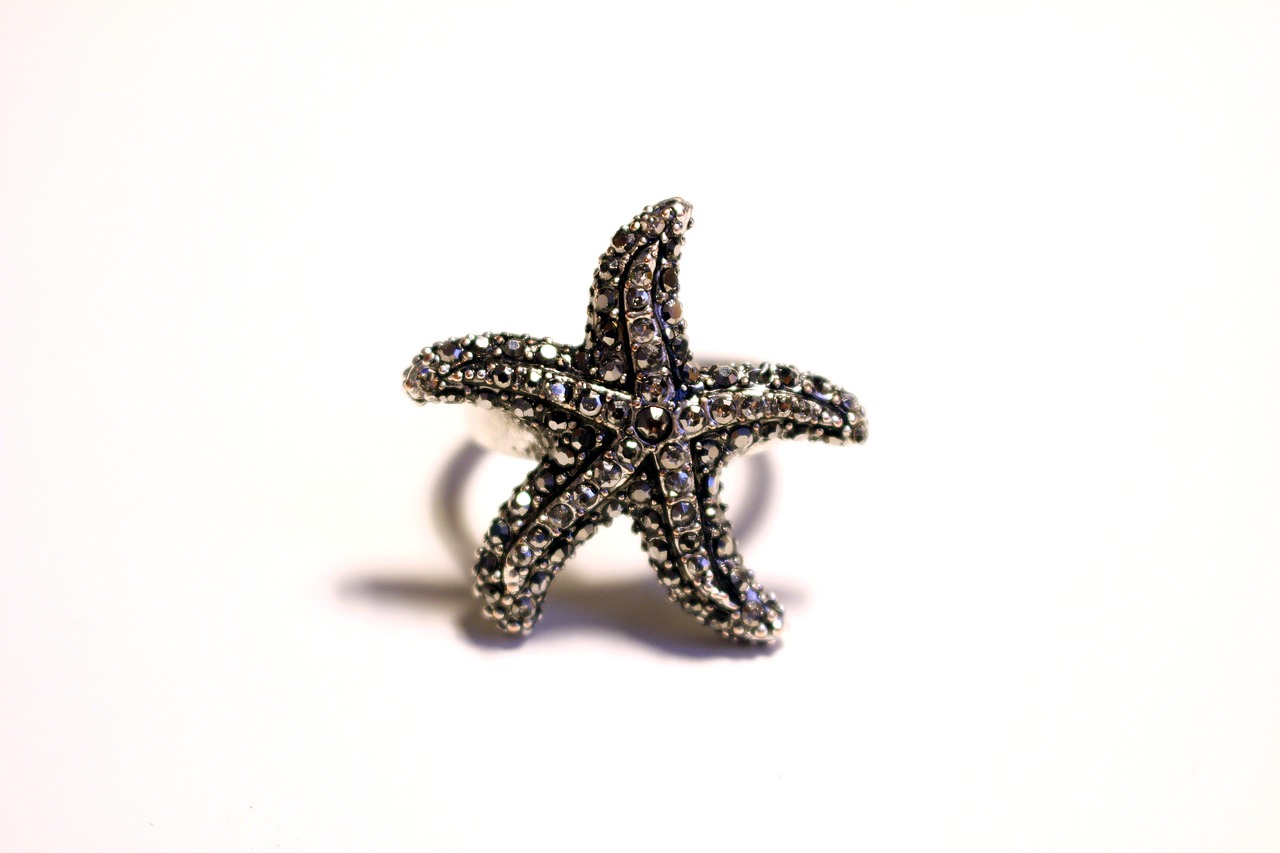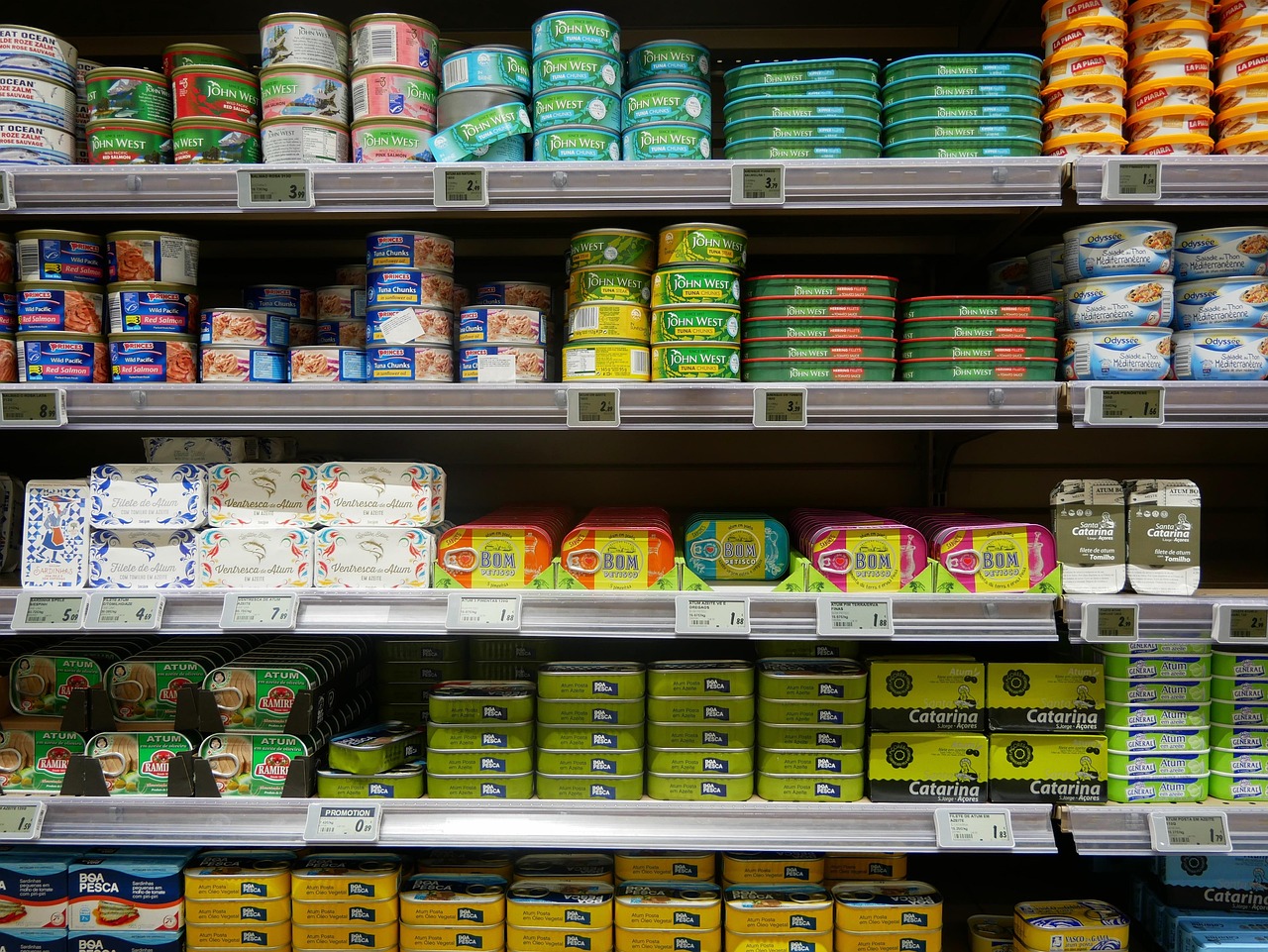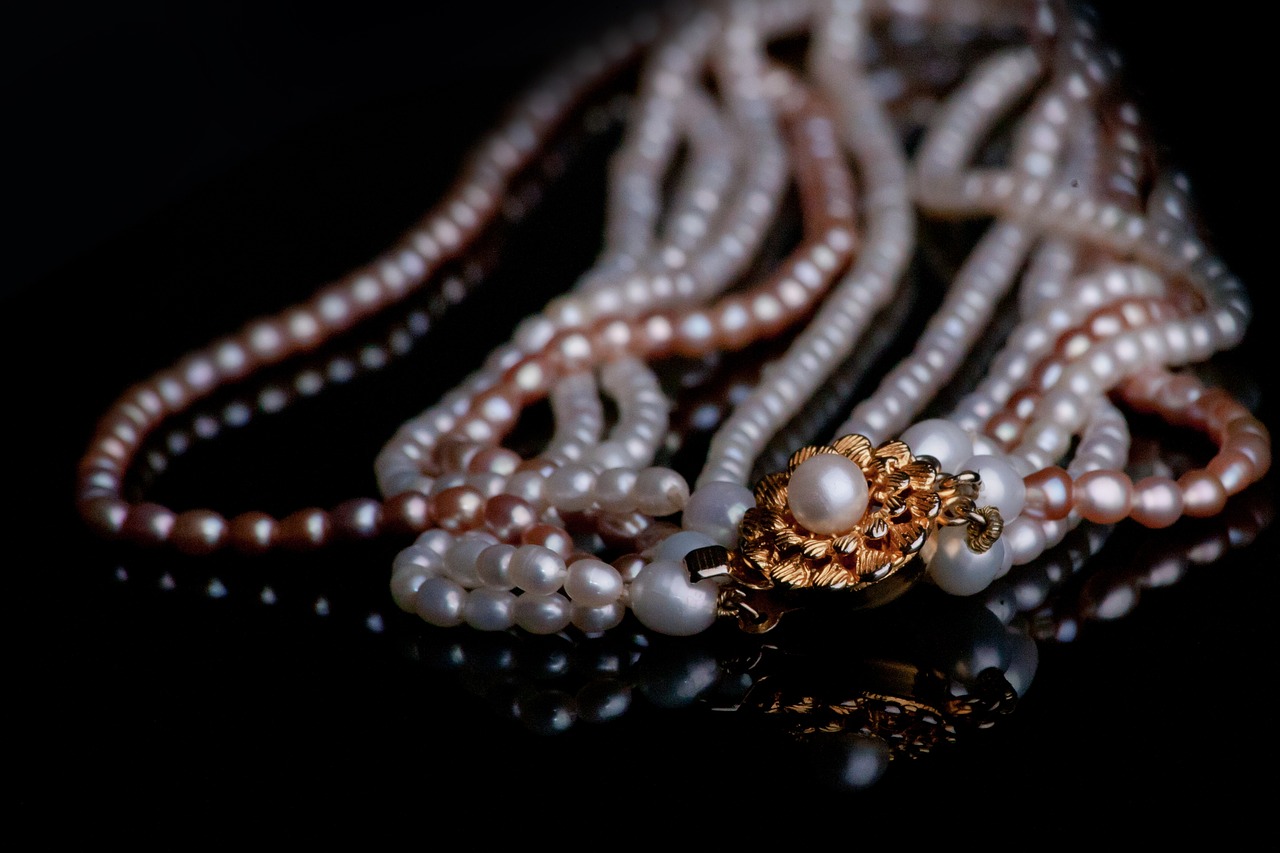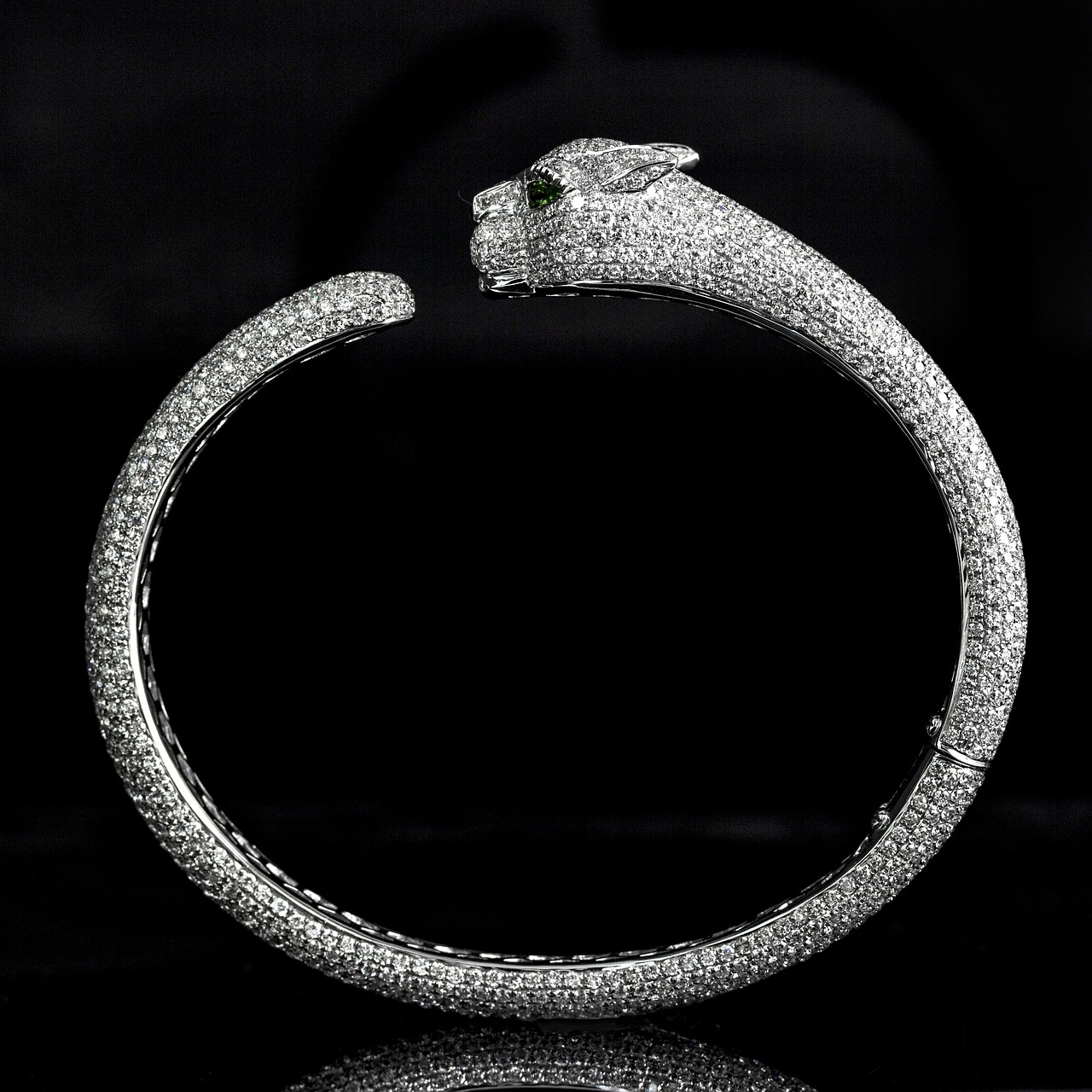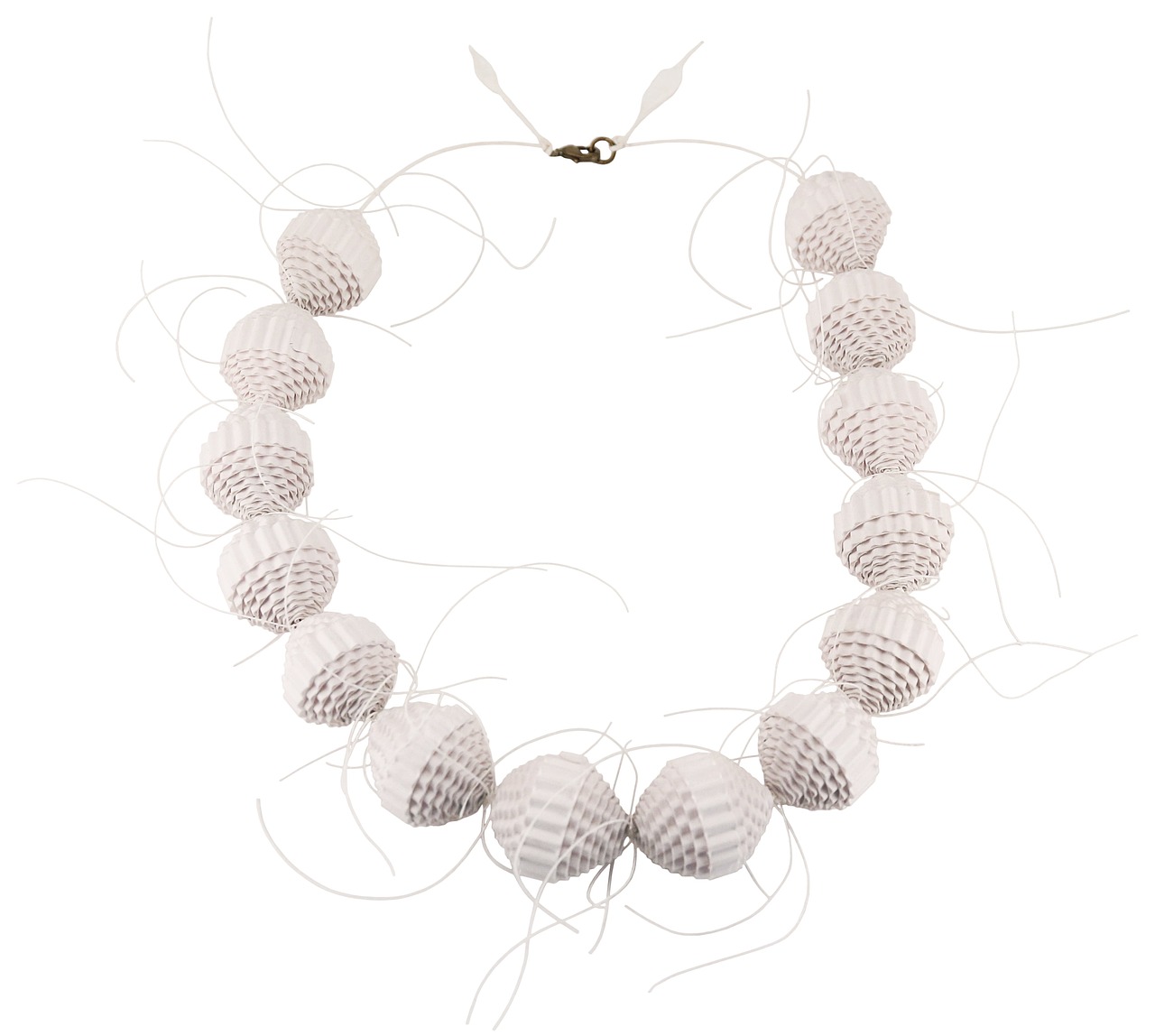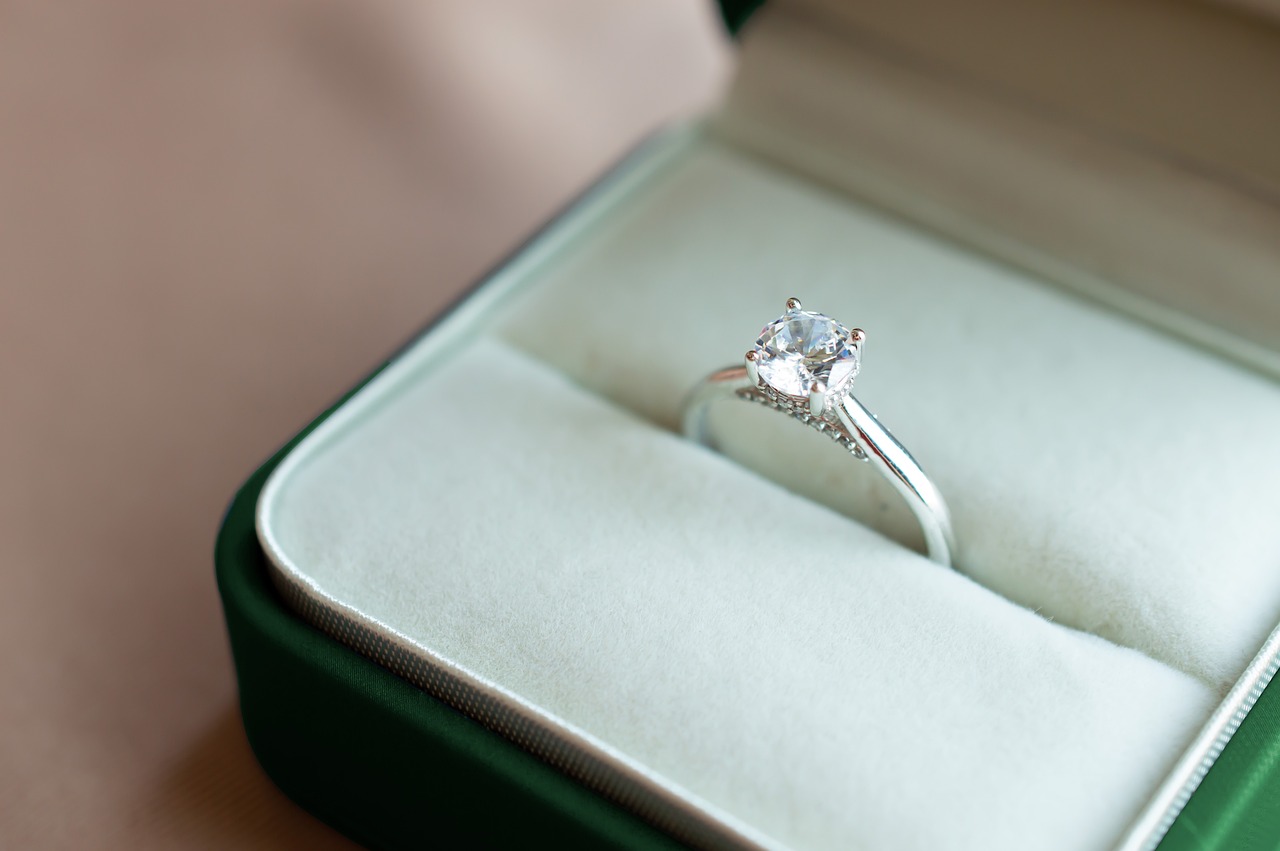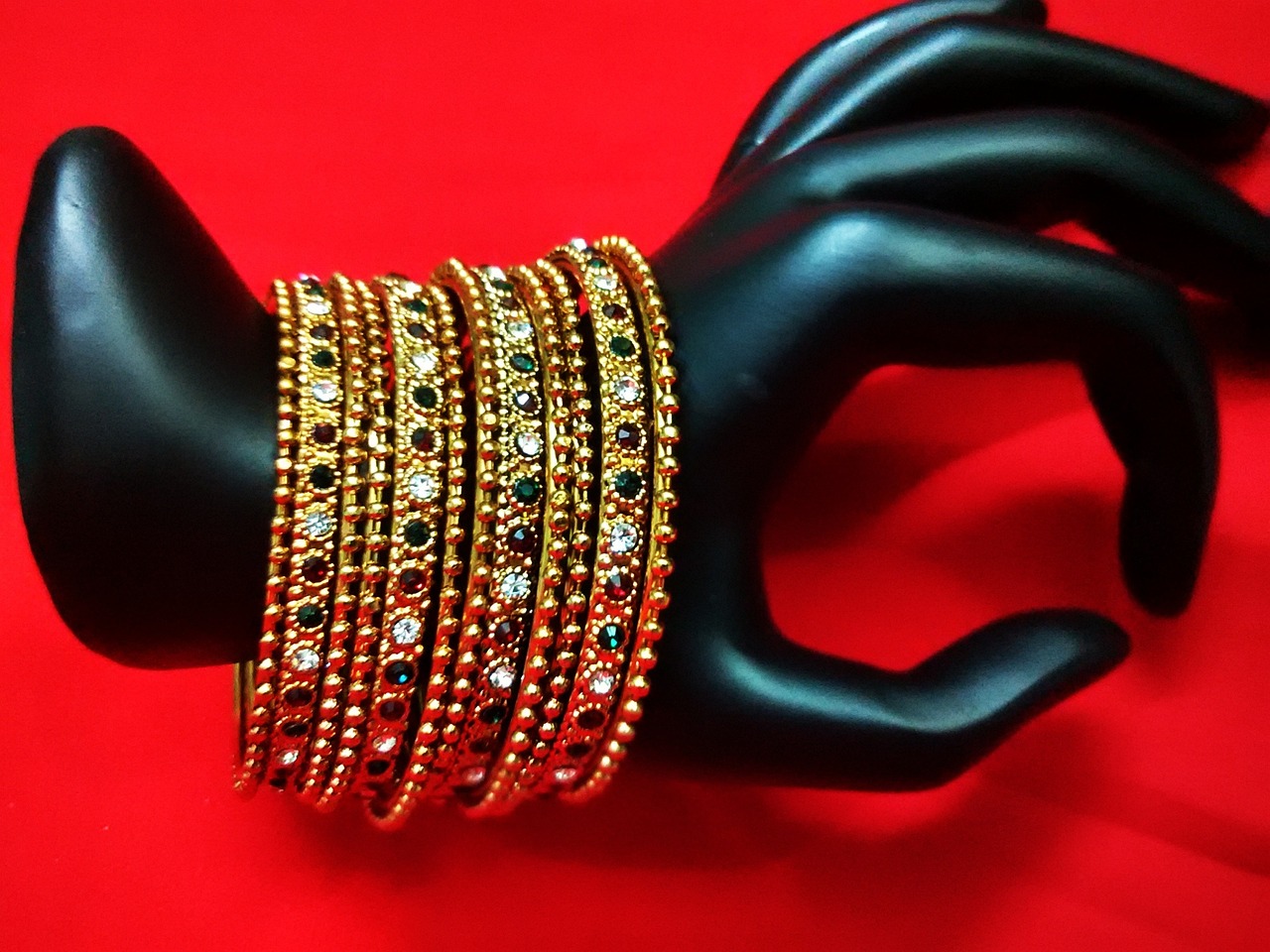Jewelry has long transcended mere decoration; it embodies personal expression, cultural significance, and deep emotional connections. This article delves into the multifaceted role of jewelry in storytelling, revealing how each piece can narrate a unique tale.
Across various cultures, jewelry carries profound meanings and traditions. For instance, in many African cultures, beads symbolize wealth and status, while in Indian traditions, gold jewelry is often associated with prosperity and auspiciousness. Understanding these symbols not only enriches our appreciation for the pieces we wear but also connects us to the diverse tapestry of human expression.
Jewelry choices can reveal much about an individual’s personality, values, and life experiences. A simple silver ring might signify a minimalist lifestyle, while a bold statement necklace could reflect a vibrant, outgoing personality. This section delves into how accessories serve as extensions of self-expression, acting as a canvas for personal stories and beliefs.
Certain types of jewelry, such as family heirlooms or personalized pieces, hold unique emotional significance. Family heirlooms often come with rich histories, connecting wearers to their ancestors and cultural heritage. Personalized pieces, like engraved bracelets or custom-made rings, allow individuals to express their unique stories and milestones, making each item a cherished memory.
Family heirlooms often carry stories of heritage and tradition, becoming treasured links between generations. These pieces can symbolize resilience, love, and continuity, making them invaluable in family narratives. For example, a grandmother’s wedding ring may serve as a reminder of enduring love and commitment, bridging the past with the present.
Customized jewelry allows individuals to express their unique stories. Whether it’s a necklace featuring a child’s birthstone or a bracelet engraved with a meaningful quote, personalization creates deeper emotional connections to the items. This section examines how such pieces can encapsulate pivotal moments in life, making them irreplaceable treasures.
Cultural elements significantly impact jewelry design, reflecting traditions, beliefs, and artistry. For instance, Native American jewelry often incorporates symbols that convey spiritual meanings, while contemporary designs may blend traditional techniques with modern aesthetics. Here, we discuss how cultural backgrounds influence accessory choices, shaping the narratives behind each piece.
Jewelry often marks significant life events, from engagements to graduations. These pieces not only commemorate milestones but also serve as tangible reminders of important moments in our lives. This section highlights the role of accessories in celebrating achievements and transitions.
Engagement rings symbolize commitment and love, often featuring specific designs and stones that hold personal significance. From classic diamond solitaires to unique gemstone settings, these rings tell a story of romance and partnership. We explore the traditions surrounding these iconic pieces and how they vary across cultures.
Gifted jewelry can elevate celebrations, embodying love and thoughtfulness. Whether it’s a birthday gift or an anniversary surprise, jewelry often serves as a lasting reminder of special occasions. This subsection discusses how jewelry enhances the joy of celebrations, making them even more memorable.
Wearing jewelry can influence mood and self-esteem. Studies suggest that individuals who wear jewelry may feel more confident and empowered. This section investigates the psychological impacts of accessorizing and how it can enhance one’s self-image.
The right piece of jewelry can boost self-image and confidence. A well-chosen accessory can transform an outfit and elevate one’s mood, impacting how individuals perceive themselves. Here, we explore how accessories can change the way individuals see themselves and how they are perceived by others.
Jewelry often plays a pivotal role in fashion, influencing current trends and styles. From statement earrings to layered necklaces, accessories can define and elevate fashion statements. This part discusses how jewelry trends evolve and how they reflect broader cultural movements.
With growing awareness around sustainability, ethical jewelry is becoming more prominent. Consumers are increasingly seeking pieces that are responsibly sourced and produced. This section examines how individuals can make responsible choices in their jewelry purchases, promoting sustainability in the industry.
Understanding the importance of ethical sourcing is crucial for consumers. We discuss practices that ensure jewelry is produced responsibly and sustainably, highlighting brands that prioritize ethical standards.
Upcycling is a creative way to promote sustainability in jewelry. This subsection explores how repurposing old pieces can reduce waste and create unique accessories, encouraging consumers to think creatively about their jewelry choices.

What Does Jewelry Symbolize in Different Cultures?
Jewelry has been an integral part of human culture for centuries, transcending mere aesthetic appeal to embody deeper meanings and traditions. Across the globe, different cultures have imbued their jewelry with unique symbols that reflect their beliefs, values, and histories. Understanding these cultural significances can not only enhance our appreciation for the jewelry we wear but also enrich our connections with the stories behind these pieces.
In many cultures, jewelry serves as a powerful symbol of identity and status. For instance, in ancient Egypt, jewelry was not only a fashion statement but also a means of protection and a connection to the divine. Pieces adorned with scarabs or ankhs were believed to carry spiritual significance, safeguarding the wearer in the afterlife.
- India: In Indian culture, jewelry is often associated with marital status and is integral to wedding ceremonies. Gold jewelry, in particular, symbolizes wealth and prosperity, while specific designs, like the mangalsutra, signify the bond of marriage.
- Native American: For many Native American tribes, jewelry made from natural materials such as turquoise and silver holds deep cultural significance. These pieces often tell stories of heritage, spirituality, and connection to the earth.
- China: In Chinese culture, jewelry often incorporates symbols of luck and prosperity. For example, jade is highly valued for its believed protective qualities and is often gifted to children to ensure good fortune.
The meanings behind jewelry can also be tied to significant life events. In many cultures, jewelry is given as a rite of passage. For example, in Western cultures, the giving of a diamond engagement ring symbolizes a promise of love and commitment, while in African cultures, intricate beadwork may signify a young girl’s transition into womanhood.
Moreover, the colors and materials used in jewelry can carry specific meanings. For instance, in many cultures, red is associated with love and passion, making it a popular choice for romantic gifts. Conversely, black jewelry may symbolize mourning or loss, reflecting the emotional weight that these pieces can carry.
Understanding these cultural symbols can deepen our appreciation for the jewelry we choose to wear or gift. It allows us to connect with the stories and traditions of others, fostering a sense of community and shared human experience. Jewelry, therefore, becomes more than just an accessory; it transforms into a vessel of history, emotion, and meaning.
In conclusion, the rich tapestry of cultural symbolism found in jewelry highlights its importance as a form of expression. By recognizing the significance behind different pieces, we can cultivate a greater appreciation for the artistry and stories they represent. Whether it be a family heirloom passed down through generations or a contemporary piece reflecting modern values, jewelry continues to be a powerful medium for storytelling across cultures.
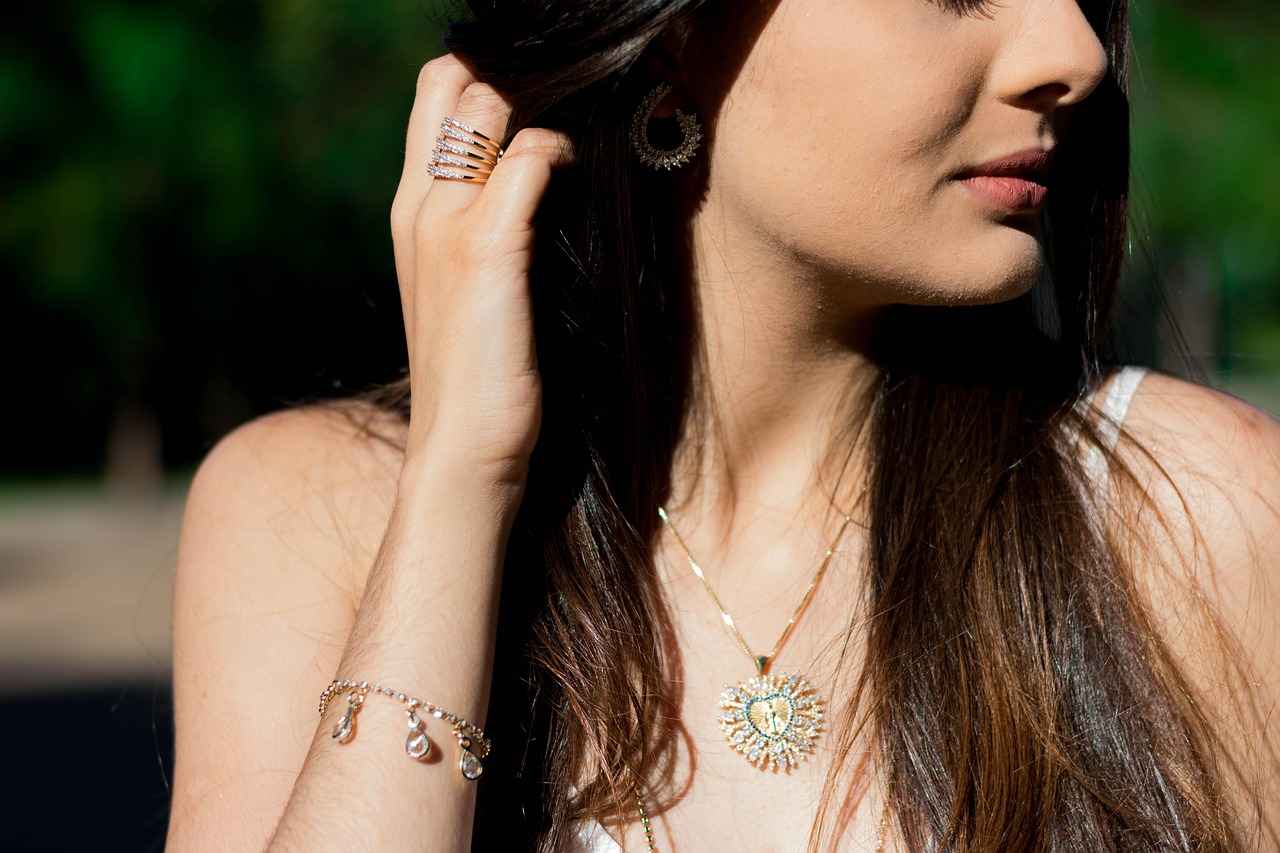
How Does Jewelry Reflect Personal Identity?
Jewelry has always been a significant aspect of human culture, transcending mere adornment to serve as a profound medium of self-expression. Each piece tells a unique story, offering insight into the wearer’s personality, values, and life experiences. In this section, we delve into how jewelry choices can reveal much about an individual’s identity.
Every piece of jewelry we choose to wear can reflect various facets of our identity. For instance, a bold statement necklace might indicate a confident personality, while delicate, understated pieces may suggest a more reserved nature. The colors, materials, and styles of jewelry can also signify personal preferences or cultural affiliations.
Jewelry often carries emotional significance, acting as a reminder of pivotal life events. For example, a graduation ring or a family heirloom can symbolize hard work, achievement, and connection to heritage. These pieces become more than just accessories; they embody personal narratives and memories.
Customized jewelry allows individuals to express their unique stories and experiences. Whether it’s an engraved bracelet or a bespoke ring, personalized pieces can hold deep emotional connections. This customization can reflect personal milestones, such as anniversaries or the birth of a child, serving as a tangible reminder of cherished moments.
The world of fashion continuously evolves, and jewelry is no exception. Trends can significantly influence what individuals choose to wear. For instance, during certain periods, bohemian styles might dominate, leading to a preference for layered necklaces and chunky rings. Understanding these trends can provide insight into how societal influences shape personal identity.
Cultural heritage plays a crucial role in shaping jewelry preferences. Traditional pieces often carry specific meanings and are worn during significant events, such as weddings or religious ceremonies. For example, in many cultures, gold jewelry symbolizes wealth and status, while in others, it may represent family lineage or spiritual beliefs. Recognizing these cultural influences can deepen our appreciation for the jewelry we wear.
Wearing jewelry can significantly impact self-esteem and confidence. The right piece can enhance one’s appearance and provide a sense of empowerment. For many, wearing a signature piece of jewelry can become a part of their identity, contributing to how they perceive themselves and how others perceive them.
Psychological studies suggest that wearing jewelry can positively affect mood and self-perception. The act of accessorizing can be a form of self-care, offering a boost in confidence and enhancing personal style. This can lead to a more positive outlook and improved social interactions.
Jewelry can also serve as a reflection of personal values and beliefs. For instance, individuals who prioritize sustainability may choose ethically sourced or upcycled jewelry, showcasing their commitment to environmental responsibility. Similarly, pieces that symbolize particular beliefs or causes can serve as powerful statements of identity.
In conclusion, jewelry choices are a rich tapestry of personal identity, cultural influences, and emotional connections. By understanding the deeper meanings behind our accessories, we can appreciate how they serve as extensions of ourselves, telling our unique stories to the world.
What Types of Jewelry Are Most Personal?
Jewelry has a profound ability to connect us to our past, especially when it comes to certain types that carry significant emotional weight. Among these, family heirlooms and personalized pieces stand out as artifacts of our histories, evoking memories and stories that shape our identities.
Family heirlooms, such as rings, necklaces, or even watches, often serve as tangible links to our ancestors. These items are more than just jewelry; they are repositories of family history. Each piece typically comes with its own story, passed down through generations, often reflecting the values and traditions of the family.
- Connection to Heritage: Heirlooms remind us of our roots and familial bonds.
- Symbol of Love: They often represent the love and sacrifices made by previous generations.
- Unique Narratives: Each piece carries a unique story, making it irreplaceable.
Personalized jewelry, such as engraved necklaces or custom birthstone rings, allows individuals to express their unique stories. These pieces often commemorate special occasions or milestones, serving as constant reminders of significant moments in our lives.
- Tailored to Individual Experiences: Personalized jewelry can reflect personal achievements, such as graduations or anniversaries.
- Emotional Connection: These pieces often evoke feelings of love, joy, or nostalgia.
- Creative Expression: They allow for creativity, enabling wearers to design something that truly represents them.
Jewelry often transcends its physical form to become a crucial element in family storytelling. Heirlooms can be passed down during significant life events, such as weddings or births, thereby solidifying their role in family history. For instance, a grandmother’s engagement ring can become a cherished token for a granddaughter, symbolizing continuity and love.
Customized pieces can help bridge gaps between generations. For example, a mother might gift her daughter a locket with a family photo, creating a sense of belonging and connection. This not only serves as a beautiful accessory but also as a reminder of cherished relationships and shared memories.
Wearing jewelry that holds personal significance can have profound psychological effects. It can enhance self-esteem and provide a sense of comfort. The act of wearing something that connects us to our past can evoke feelings of security and belonging, reinforcing our identity and personal narrative.
Indeed, jewelry can serve as a legacy, allowing individuals to pass down not just the physical item, but also the stories and memories associated with it. This creates a lasting impact that can influence future generations, ensuring that the values and traditions of the family endure.
In conclusion, whether through family heirlooms or personalized pieces, jewelry has an unparalleled ability to connect us to our past. Each piece tells a story, making it an integral part of our identity and emotional landscape.
How Do Heirlooms Tell Family Stories?
Family heirlooms are more than just objects; they are tangible connections to our past, rich with history and sentiment. These items often hold significant personal and cultural narratives that transcend time, becoming cherished links between generations. In this section, we will explore how heirlooms not only preserve family stories but also foster a sense of identity and belonging.
Family heirlooms can be defined as items passed down through generations, often carrying emotional weight and historical significance. These can include jewelry, furniture, photographs, or even recipes. Each heirloom carries a unique story, encapsulating the experiences, traditions, and values of those who came before us.
Heirlooms serve as vital components in family narratives, acting as physical reminders of our heritage. They help us to connect with our ancestors, providing insight into their lives, struggles, and triumphs. For instance, a grandmother’s wedding ring might symbolize enduring love and commitment, while a grandfather’s military medals could evoke tales of bravery and sacrifice.
Sharing the stories behind heirlooms during family gatherings can strengthen bonds among family members. When stories are told, they create a shared experience that fosters understanding and empathy. For example, a family might gather around a vintage quilt, each patch representing a different family member’s story, sparking conversations that deepen familial ties.
Heirlooms often reflect cultural backgrounds and traditions. They can embody specific customs, beliefs, and artistic expressions unique to a family’s heritage. For example, a traditional Native American beaded necklace might not only be a beautiful accessory but also a representation of cultural identity and pride. Understanding the cultural significance of heirlooms can enhance appreciation and respect for our roots.
Preserving heirlooms is crucial for maintaining family history. Proper care, such as storing items in climate-controlled environments or using protective materials, can extend their life. Additionally, documenting the stories behind each heirloom—through written accounts or digital recordings—ensures that future generations will understand their significance.
- Jewelry: Rings, necklaces, and bracelets often carry deep emotional ties.
- Furniture: Items like antique tables or chairs may have been in the family for generations.
- Photographs: Family portraits serve as visual narratives of our lineage.
- Books: Family bibles or personal journals can provide insights into the lives of ancestors.
In conclusion, family heirlooms are invaluable treasures that connect us to our past and shape our identity. They serve as conduits for storytelling, enabling us to share our family’s legacy with future generations. By preserving these items and their associated stories, we not only honor our ancestors but also enrich our own lives.
What Role Do Customized Pieces Play?
Customized jewelry plays a significant role in personal expression, allowing individuals to share their unique stories and experiences through their accessories. Unlike mass-produced pieces, customized jewelry is tailored to reflect the wearer’s personality, interests, and important life events. This section delves into the emotional connections forged through personalization and the impact it has on the wearer’s identity.
Customized jewelry offers a level of personalization that cannot be matched by standard pieces. When individuals opt for jewelry that is uniquely designed for them, it becomes a tangible representation of their journey. Whether it’s a necklace engraved with a significant date or a ring featuring a birthstone, each piece tells a story that is deeply personal.
Personalized jewelry fosters a deeper emotional connection between the wearer and the piece. For instance, a custom bracelet can symbolize a milestone in one’s life, such as a graduation or an anniversary. The act of choosing specific elements, such as materials, colors, and designs, allows individuals to infuse their jewelry with meaning. This connection often leads to a sense of pride and attachment, making the piece much more than just an accessory.
- Engravings: Adding names, dates, or meaningful phrases can transform a simple piece into a cherished keepsake.
- Birthstones: Incorporating birthstones can personalize jewelry to represent family members or significant life events.
- Design Variations: Customizing the design allows individuals to create something that resonates with their style and preferences.
Customized jewelry serves as a reflection of personal identity. It can showcase one’s values, interests, and even aspirations. For example, someone who values sustainability might choose to create a piece from ethically sourced materials. Similarly, an individual passionate about a particular hobby may opt for designs that represent that interest, such as a pendant shaped like a musical note or a charm bracelet featuring symbols of their favorite activities.
Customized jewelry often plays a significant role in relationships, serving as a meaningful gift that signifies love and commitment. Couples may choose to create matching pieces that symbolize their bond, while parents might customize jewelry to celebrate the birth of a child. These pieces become cherished tokens that strengthen emotional ties and serve as reminders of special moments shared together.
Wearing customized jewelry can also be a form of self-care, as it allows individuals to celebrate their uniqueness and personal journeys. By wearing pieces that resonate with their identity, individuals can boost their confidence and self-esteem. This act of self-expression can be empowering, reinforcing the idea that everyone has a story worth sharing.
In conclusion, customized jewelry is not just an accessory; it is a powerful medium for self-expression and emotional connection. By choosing to personalize their jewelry, individuals can create pieces that truly reflect their unique stories, enhancing their personal identity and deepening their connections with others.
How Do Cultural Influences Shape Jewelry Design?
Jewelry design is a captivating blend of art, culture, and personal expression. Throughout history, various cultures have infused their unique traditions and beliefs into the jewelry they create. This article delves into how cultural influences shape jewelry design, reflecting the values and artistry of different communities.
Jewelry often embodies the spiritual beliefs and traditions of a culture. For instance, in many Indigenous cultures, jewelry is not just decorative; it serves as a symbol of identity and heritage. The use of specific materials, colors, and symbols can convey deep meanings, such as protection, love, or remembrance.
Each region has its distinct style of jewelry that reflects local customs and resources. For example, the intricate beadwork of African tribes tells stories through its patterns and colors, while the delicate filigree work in Mediterranean jewelry showcases the region’s rich history of craftsmanship. These regional styles not only highlight the artistry involved but also the cultural narratives that are passed down through generations.
Symbols in jewelry often represent cultural values and beliefs. For example, in many Asian cultures, the dragon is a powerful symbol of strength and good fortune, often incorporated into jewelry designs. Similarly, Native American jewelry frequently features symbols that connect the wearer to nature and spirituality. Understanding these symbols can enhance our appreciation for the pieces we wear.
In today’s globalized world, traditional jewelry styles are often reinterpreted in modern designs. Many contemporary jewelers draw inspiration from their cultural heritage, merging traditional techniques with modern aesthetics. This fusion not only keeps cultural practices alive but also makes them relevant to new generations. For instance, the resurgence of vintage styles reflects a growing appreciation for artisanal craftsmanship and the stories behind each piece.
- Indian Jewelry: Known for its vibrant colors and intricate designs, Indian jewelry often features gold, gemstones, and elaborate patterns that signify wealth and status.
- Mexican Silver Jewelry: Mexican artisans are renowned for their silverwork, often incorporating native stones and traditional motifs that reflect their rich cultural heritage.
- Scandinavian Jewelry: Minimalistic and functional, Scandinavian designs often highlight natural elements and craftsmanship, emphasizing simplicity and elegance.
Cultural events and celebrations often inspire unique jewelry designs. For example, wedding jewelry varies significantly across cultures, with each tradition offering distinct styles and meanings. In some cultures, the engagement ring is a central piece, while in others, it is the wedding band that holds significance. These variations provide insight into the values and customs of each culture.
As consumers, understanding the cultural influences behind jewelry design allows us to make informed choices. It fosters respect for the artistry involved and encourages the support of ethical practices. By appreciating the stories and traditions embedded in jewelry, we can connect more deeply with the pieces we choose to wear.
In conclusion, the interplay between culture and jewelry design is profound and multifaceted. By exploring these cultural influences, we not only enrich our understanding of jewelry but also celebrate the diverse narratives that shape our world.
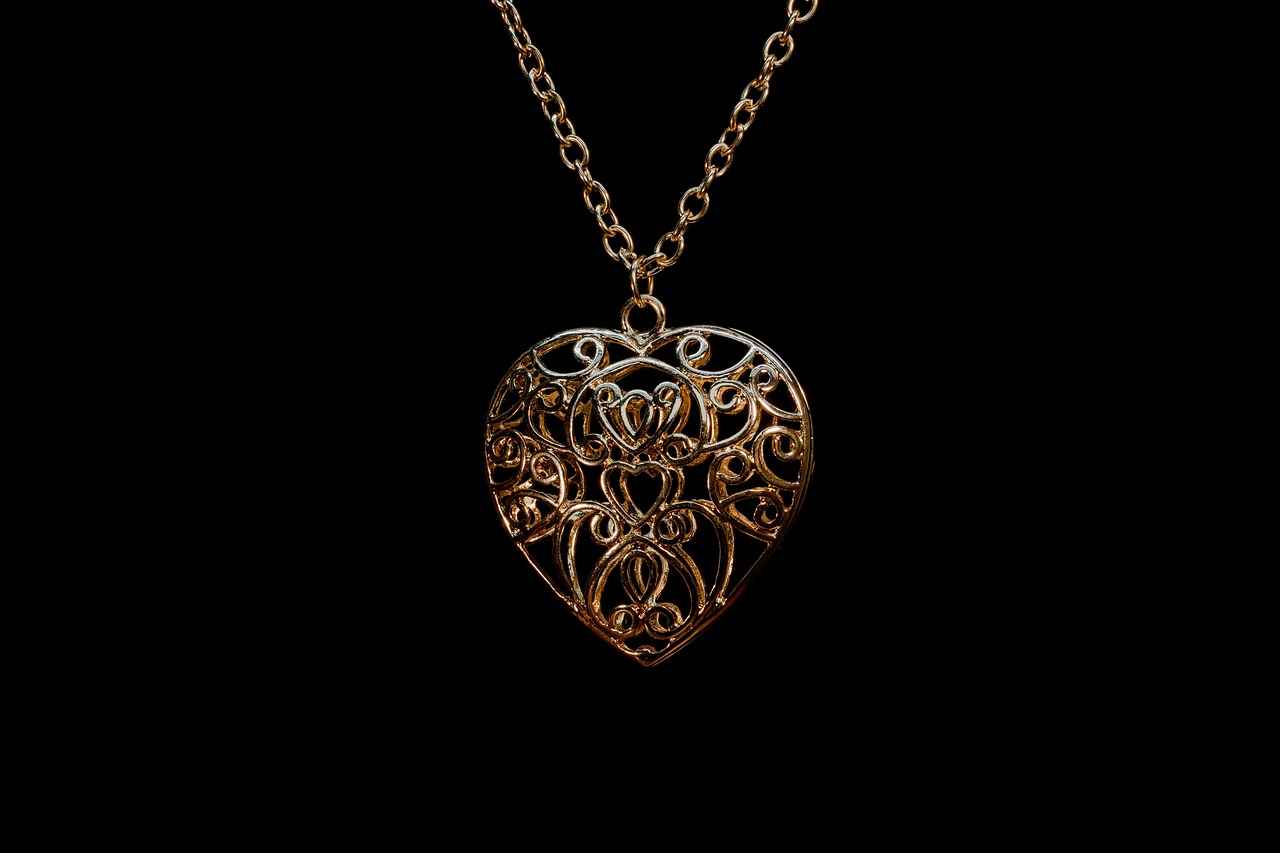
Why Is Jewelry Important in Milestones and Celebrations?
Jewelry has always played a significant role in human culture, particularly during milestones and celebrations. From engagements to graduations, the pieces we choose to wear or gift carry profound meanings and memories. This section delves into the importance of jewelry in commemorating life’s significant events, highlighting how accessories can encapsulate emotions and create lasting connections.
Jewelry serves as a powerful symbol during pivotal moments in our lives. For instance, engagement and wedding rings are not just beautiful adornments; they signify commitment and love. The choice of materials, gemstones, and designs often reflects personal stories and cultural traditions, making each piece unique to the couple.
- Engagement Rings: These rings often feature a diamond or other precious stone, symbolizing the promise of a future together. The design can vary widely, from classic solitaires to intricate vintage styles, each telling a different story.
- Graduation Jewelry: Many graduates receive jewelry as a token of achievement. From charm bracelets to personalized necklaces, these pieces often commemorate hard work and dedication.
- Anniversary Gifts: Jewelry is a popular choice for anniversaries, with each year often associated with specific materials. For example, the first anniversary is traditionally celebrated with paper, while the 10th is marked with tin or aluminum, and the 25th with silver.
Gifting jewelry can elevate the significance of any celebration. When a loved one presents a piece of jewelry, it often embodies thoughtfulness and emotion. Such gifts are not just items; they are tokens of affection that can be cherished for a lifetime. For example, a grandmother might pass down a family heirloom necklace to her granddaughter as a rite of passage, creating a tangible connection between generations.
Cultural backgrounds play a vital role in shaping jewelry traditions. In many cultures, specific pieces are worn during significant life events, reflecting values and beliefs. For instance, in some cultures, gold jewelry is a symbol of wealth and prosperity, often worn during weddings and other celebrations. Understanding these cultural nuances can enhance our appreciation for the jewelry we wear and gift.
Wearing jewelry can significantly influence our mood and self-esteem. During celebrations, individuals often feel more confident and empowered when adorned with meaningful accessories. The right piece can serve as a reminder of cherished memories or accomplishments, enhancing the overall joy of the occasion. Moreover, the act of gifting jewelry can strengthen bonds between individuals, as it signifies care and thoughtfulness.
Jewelry has the unique ability to capture moments in time. Each piece can tell a story, reminding us of significant events and the emotions associated with them. For instance, a graduation ring can evoke memories of hard work and determination, while a wedding band symbolizes the love shared between partners. When we wear jewelry that marks these milestones, we carry our stories with us, creating a personal narrative that reflects our life’s journey.
What Jewelry Is Commonly Used for Engagements?
Engagement rings hold a special place in the realm of jewelry, representing not only a promise of love but also a deep commitment between partners. These rings often come adorned with precious stones and unique designs, each telling its own story of devotion and hope for the future. In this section, we will delve into the various aspects of engagement rings, including their history, symbolism, and popular styles.
Engagement rings have been a tradition for centuries, with their origins tracing back to ancient Rome, where rings made of iron were exchanged to signify a binding contract. Today, the symbolism of these rings has evolved, embodying love, commitment, and fidelity. The circular shape of the ring represents eternity, with no beginning or end, reinforcing the idea of an everlasting bond between partners.
- Solitaire Rings: Featuring a single diamond or gemstone, solitaire rings are classic and timeless.
- Halo Rings: These designs encircle the central stone with smaller diamonds, enhancing its brilliance and size.
- Three-Stone Rings: Symbolizing the past, present, and future, these rings feature three stones, often representing the couple’s journey together.
- Vintage Rings: Inspired by designs from past eras, vintage rings often include intricate details and unique settings.
While diamonds are the traditional choice for engagement rings, many couples are now opting for alternative stones that reflect their unique personalities. Some popular choices include:
- Sapphires: Known for their vibrant blue hue, sapphires are a durable and stunning alternative.
- Emeralds: Representing love and rebirth, emeralds offer a rich green color that stands out.
- Moissanite: A lab-created stone that resembles diamonds, moissanite is an ethical and cost-effective option.
Engagement rings are not just a personal choice; they are also influenced by cultural traditions. For example, in some cultures, colored gemstones are preferred over diamonds, while others may have specific customs regarding the style and presentation of the ring. Understanding these traditions can help couples make informed decisions that honor their backgrounds.
Choosing the perfect engagement ring involves several factors:
1. **Budget:** Determine how much you are willing to spend.2. **Style:** Consider your partner's personal style and preferences.3. **Metal Type:** Common options include white gold, yellow gold, and platinum.4. **Ring Size:** Ensure you know your partner's ring size for a perfect fit.
In conclusion, engagement rings are more than just beautiful pieces of jewelry; they are significant symbols of love and commitment. By understanding the various designs, stones, and cultural influences, couples can select a ring that not only reflects their personal style but also embodies their unique love story.
How Do Gifts of Jewelry Enhance Celebrations?
Jewelry has a unique ability to enhance celebrations, transforming ordinary moments into extraordinary memories. When gifted, it embodies not only love but also thoughtfulness, making it a cherished symbol of connection between the giver and the recipient. This section delves into how jewelry elevates the joy of special occasions, creating lasting impressions.
Jewelry often serves as a timeless reminder of significant events. Unlike other gifts, pieces such as necklaces, bracelets, or rings can be worn daily, allowing the recipient to carry a piece of that special moment with them. The emotional weight of a jewelry gift often surpasses its monetary value, as it encapsulates memories and feelings.
Jewelry is frequently associated with major life milestones. For instance, engagement rings symbolize the promise of a future together, while graduation jewelry often commemorates academic achievements. Each piece tells a story, marking the transition from one phase of life to another.
- Engagement Rings: Often a symbol of commitment, these rings are typically adorned with precious stones, making them a perfect gift for engagements.
- Anniversary Jewelry: Items such as matching bracelets or necklaces can signify the enduring nature of love.
- Birthstone Jewelry: Personalized gifts that reflect the recipient’s birth month add a unique touch to celebrations.
- Custom Pieces: Tailor-made jewelry can encapsulate personal stories and memories, making them incredibly special.
Jewelry not only marks special occasions but also strengthens emotional bonds. When a piece is gifted, it often carries a story or a shared experience, which can deepen the connection between individuals. For example, a grandmother’s locket passed down through generations serves as a tangible link to family history, evoking feelings of nostalgia and love.
The way jewelry is presented can significantly impact the emotional response of the recipient. A beautifully wrapped box or a heartfelt note can amplify the sentiment behind the gift. This attention to detail shows the recipient that they are valued and cherished, enhancing the overall experience of receiving the gift.
In many cultures, gifting jewelry is steeped in tradition. For example, in some cultures, gold jewelry is a common gift during weddings, symbolizing prosperity and love. Understanding these cultural nuances can add depth to the act of gifting, making it even more meaningful.
Jewelry often transcends generations, becoming a family heirloom that tells a story long after the original gift-giving moment. This legacy aspect adds a layer of significance, as recipients can pass down these pieces to future generations, preserving family history and traditions.
In conclusion, gifts of jewelry enhance celebrations by embodying love, thoughtfulness, and emotional connections. Whether marking a milestone or simply expressing appreciation, jewelry serves as a powerful medium for conveying sentiments that words alone cannot express. As such, it remains a cherished choice for commemorating life’s most special moments.

What Are the Psychological Effects of Wearing Jewelry?
The connection between jewelry and psychology is a fascinating topic that delves into how wearing accessories can profoundly influence our emotions and self-worth. Jewelry is not merely an aesthetic choice; it can significantly impact our mental state and self-perception. This section explores the various psychological effects of wearing jewelry and how it can enhance our confidence.
Wearing jewelry can create a positive emotional response. For many, a beautiful piece can serve as a reminder of special moments or loved ones, triggering feelings of happiness and nostalgia. Studies have shown that wearing items that hold sentimental value can lead to an increase in mood and overall well-being. Here are some ways jewelry can influence mood:
- Personal Connection: Jewelry that has a personal story or significance can evoke positive memories, boosting mood.
- Aesthetic Appeal: Wearing visually appealing pieces can enhance self-image, leading to increased confidence.
- Social Interaction: Compliments received on jewelry can enhance feelings of acceptance and validation in social settings.
The act of accessorizing can serve as a form of self-expression, allowing individuals to showcase their personality and style. This self-expression can lead to improved self-esteem. Here’s how:
- Empowerment: Choosing jewelry that resonates with one’s identity can empower individuals, making them feel more authentic and confident.
- Visibility: Wearing distinctive pieces can draw attention and admiration, reinforcing a positive self-image.
- Fashion Statement: Jewelry can be a powerful tool in fashion, helping individuals to feel trendy and stylish, which can further boost self-esteem.
Jewelry often plays a critical role in social interactions. It can serve as a conversation starter, helping individuals connect with others. The psychological benefits of wearing jewelry in social settings include:
- Building Connections: Unique pieces can spark conversations and help individuals bond over shared interests.
- Enhancing Presence: Wearing eye-catching jewelry can enhance one’s presence in a room, making them feel more confident and engaged.
- Expressing Status: Certain jewelry pieces can signify status or achievement, impacting how individuals perceive themselves and how others perceive them.
The right piece of jewelry can change the way individuals perceive themselves. This transformation can be attributed to several factors:
- Mirror Effect: Seeing oneself adorned with jewelry can create a more favorable self-image, leading to increased confidence.
- Personal Identity: Jewelry can reflect personal values and beliefs, allowing wearers to feel more connected to their identity.
- Symbolism: Wearing jewelry that symbolizes strength or resilience can instill a sense of empowerment and positivity.
Gifting jewelry can also have significant psychological impacts, both for the giver and the receiver. Some benefits include:
- Strengthening Relationships: Gifting jewelry can symbolize love and commitment, strengthening emotional bonds.
- Creating Memories: Jewelry gifts often carry sentimental value, creating lasting memories that enhance emotional well-being.
- Reciprocal Joy: The act of giving can boost the giver’s happiness, creating a cycle of positivity and connection.
In conclusion, the psychological effects of wearing jewelry are profound and multifaceted. From boosting mood and self-esteem to enhancing social interactions and self-perception, jewelry plays a crucial role in our emotional landscape. Understanding these impacts can help individuals make more intentional choices about the accessories they wear, ultimately leading to a greater sense of confidence and well-being.
How Does Jewelry Affect Self-Perception?
Jewelry has a unique ability to transform not only an outfit but also the way individuals perceive themselves. The psychological effects of wearing jewelry can significantly influence self-image and confidence levels. In this section, we will explore how the right piece of jewelry can enhance self-perception and contribute to an individual’s overall sense of well-being.
When individuals wear jewelry that resonates with their personal style or holds sentimental value, it can lead to a noticeable boost in confidence. This phenomenon can be attributed to several factors:
- Personal Expression: Jewelry allows individuals to express their personality and creativity. Wearing pieces that reflect personal taste can enhance feelings of authenticity and self-worth.
- Social Connections: Jewelry often serves as a conversation starter or a way to connect with others. When individuals receive compliments on their accessories, it can reinforce positive self-perception.
- Symbolic Meaning: Many pieces of jewelry carry significant meanings, such as engagement rings or family heirlooms. Wearing these items can evoke feelings of love, commitment, and belonging, further boosting confidence.
The first impression is often formed within seconds, and jewelry can play a crucial role in this initial perception. Accessories can convey messages about an individual’s style, personality, and even social status. For instance:
- Style Statement: A well-chosen piece of jewelry can elevate an outfit, showcasing an individual’s fashion sense and attention to detail.
- Professionalism: In professional settings, appropriate jewelry can enhance credibility and authority, contributing to a stronger first impression.
- Creativity: Unique or artistic jewelry can signal creativity and individuality, making the wearer more memorable.
Wearing jewelry can also have a profound effect on mood. The act of adorning oneself with beautiful pieces can trigger positive emotions. Here are several ways jewelry can enhance mood:
- Joy of Ownership: The simple act of wearing something beautiful that one owns can evoke feelings of joy and satisfaction.
- Emotional Attachment: Jewelry that carries personal stories or memories can provide comfort and happiness, reminding individuals of cherished moments.
- Color Psychology: The colors and materials in jewelry can influence emotions. For instance, wearing vibrant colors may evoke feelings of happiness and energy.
For some individuals, insecurities regarding appearance can be alleviated through the strategic use of jewelry. Here’s how:
- Distraction: Jewelry can draw attention to certain features, helping to shift focus away from perceived flaws.
- Enhancement: Specific pieces can enhance features and create a more balanced appearance, contributing to improved self-esteem.
- Empowerment: Wearing bold or statement jewelry can empower individuals to embrace their uniqueness and stand out with confidence.
In conclusion, the impact of jewelry on self-perception is multifaceted. From boosting confidence and enhancing mood to influencing first impressions and helping overcome insecurities, jewelry serves as a powerful tool for personal expression and self-empowerment. By selecting pieces that resonate on a personal level, individuals can harness the transformative power of jewelry to cultivate a more positive self-image.
What is the Role of Jewelry in Fashion Trends?
Jewelry serves as a vital component in the world of fashion, acting not only as an accessory but also as a statement of personal style and cultural identity. The role of jewelry in fashion trends is significant, as it can enhance an outfit and reflect the wearer’s personality. In this section, we will explore how jewelry influences fashion, the trends it creates, and how it can elevate an individual’s overall style.
Jewelry often sets the tone for fashion trends. Designers frequently incorporate unique pieces into their collections, which can lead to widespread popularity. For example, chunky necklaces or oversized earrings can become the focal point of an outfit, inspiring fashion enthusiasts to adopt similar styles. The influence of celebrities and social media also plays a crucial role in shaping these trends, as many individuals look to influencers for inspiration.
- Layering: The trend of layering necklaces and bracelets has gained momentum, allowing individuals to mix and match different styles for a personalized look.
- Minimalism: Simple and delicate pieces are making a comeback, emphasizing elegance and sophistication.
- Bold Colors: Vibrant gemstones and colorful designs are being embraced, adding a pop of color to any outfit.
- Vintage and Retro Styles: Nostalgic designs are increasingly popular, with many opting for vintage-inspired pieces that evoke a sense of history.
Jewelry has the power to transform a basic outfit into a stunning ensemble. A simple dress can be elevated with the addition of statement earrings or a bold cuff bracelet. The right piece can draw attention to the wearer’s features and create a cohesive look. For instance, pairing a classic little black dress with a chunky necklace can add a touch of glamour and sophistication.
Jewelry is a form of personal expression. It allows individuals to showcase their unique style and personality. Whether someone prefers classic, bohemian, or edgy designs, the choices they make in jewelry can reflect their identity. Accessories can also serve as conversation starters, providing insights into one’s interests and values.
Cultural backgrounds significantly impact jewelry design and trends. Different cultures have unique styles, materials, and meanings associated with their jewelry. For example, traditional Indian jewelry often features intricate designs and vibrant colors, while Scandinavian jewelry tends to emphasize minimalism and functionality. This cultural diversity enriches the fashion landscape, allowing for a blend of styles and inspirations.
Jewelry plays a crucial role in marking significant life events, from weddings to anniversaries. Special pieces often carry sentimental value and are chosen to commemorate these moments. For instance, engagement rings are not just symbols of love; they also reflect personal taste and commitment. The choice of jewelry for special occasions can enhance the overall experience, making it memorable.
Wearing jewelry can have profound psychological effects on individuals. Accessories can boost confidence and enhance self-esteem, making the wearer feel more put-together and stylish. The right piece can also evoke positive emotions, reminding individuals of cherished memories or loved ones. This connection between jewelry and personal feelings highlights its importance in fashion and daily life.
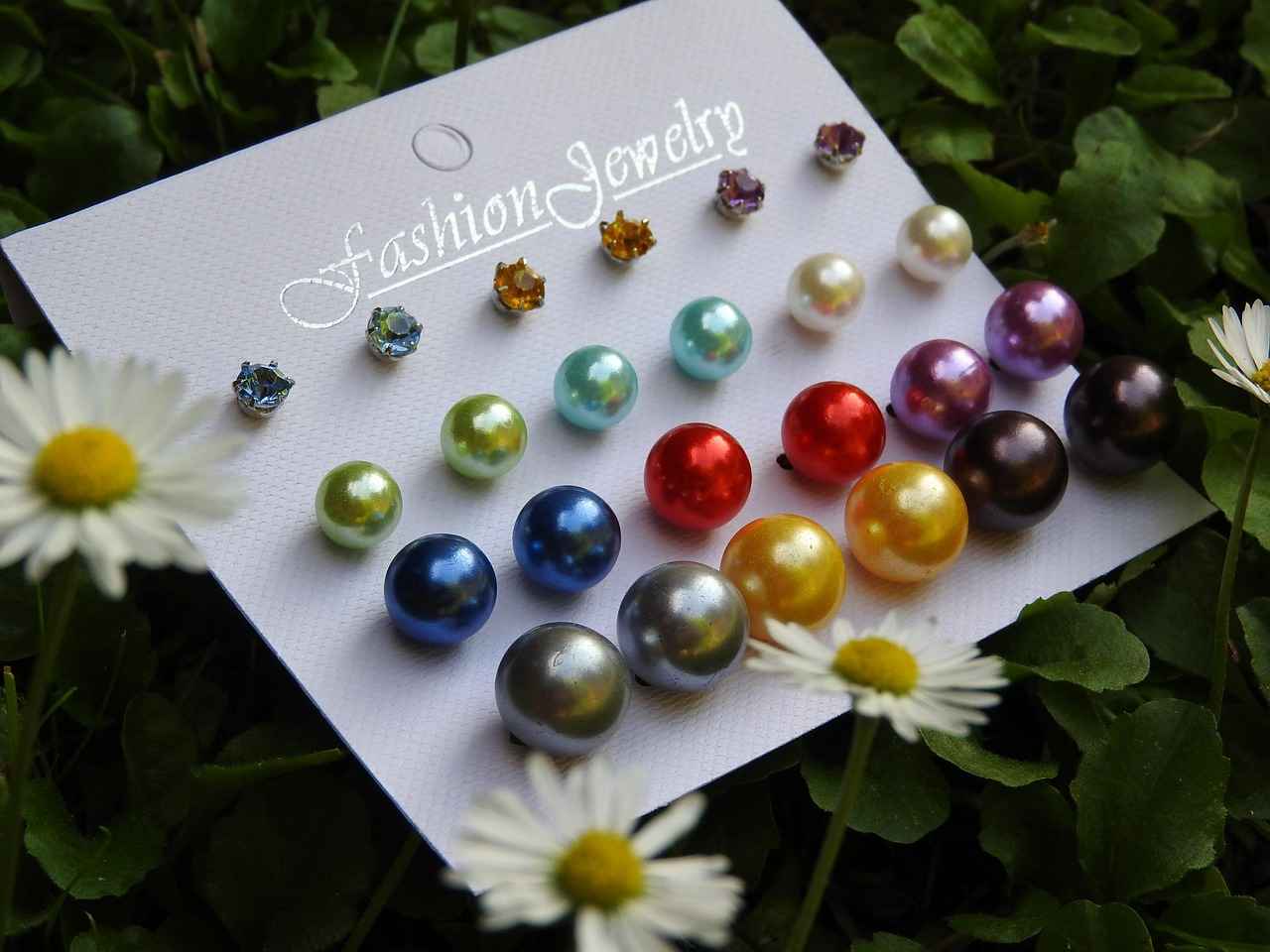
How Can Jewelry Be Sustainable and Ethical?
In recent years, there has been a significant shift in consumer awareness regarding sustainability and ethical practices within the jewelry industry. As individuals become increasingly conscious of their purchasing decisions, the demand for ethical jewelry has soared. This article delves into how consumers can make responsible choices when purchasing jewelry, ensuring their selections align with their values.
Ethical jewelry refers to pieces that are created with consideration for the environment and the people involved in their production. This includes fair labor practices, sustainable sourcing of materials, and minimal environmental impact. By choosing ethical jewelry, consumers can support brands that prioritize social responsibility and sustainability.
Understanding ethical sourcing practices is crucial for consumers. Here are some key aspects:
- Conflict-Free Diamonds: Many jewelers now offer diamonds that are certified as conflict-free, ensuring that they are not sourced from regions involved in armed conflict.
- Fair Trade Gold: This certification guarantees that the gold used in jewelry has been mined under fair labor conditions, promoting human rights and environmental sustainability.
- Recycled Materials: Some brands utilize recycled metals and stones, significantly reducing the need for new mining and minimizing environmental degradation.
Upcycling is a creative approach that can greatly contribute to sustainability in the jewelry sector. Here’s how:
- Reducing Waste: By repurposing old or broken jewelry, consumers can help minimize waste, giving new life to items that would otherwise be discarded.
- Unique Creations: Upcycled jewelry pieces often have a unique character and charm, making them one-of-a-kind accessories that tell a story.
- Cost-Effective: Upcycling can be a more affordable option, allowing individuals to create beautiful jewelry without the high cost associated with new materials.
Several brands are at the forefront of the ethical jewelry movement, setting examples for others to follow:
- Brilliant Earth: Known for its commitment to ethical sourcing, this brand offers conflict-free diamonds and recycled metals.
- Catbird: This Brooklyn-based jeweler specializes in handcrafted pieces made from recycled materials and fair-trade gemstones.
- Mejuri: Focusing on transparency, Mejuri provides detailed information about its sourcing practices, ensuring customers can make informed choices.
Making responsible choices in jewelry purchases is essential for fostering a sustainable future. Here are some practical tips:
- Research Brands: Investigate the brands you are considering. Look for those that prioritize ethical sourcing and sustainability.
- Ask Questions: Don’t hesitate to ask jewelers about their sourcing practices and the origins of their materials.
- Support Local Artisans: Purchasing from local artisans can often ensure more sustainable practices and support the local economy.
By making conscious decisions, consumers can not only enhance their personal style but also contribute to a more ethical and sustainable jewelry industry. As awareness grows, the shift towards responsible jewelry purchasing becomes not just a trend, but a necessary movement for the future.
What Are Ethical Sourcing Practices?
Understanding the significance of ethical sourcing in the jewelry industry is vital for consumers who wish to make informed choices. As awareness of sustainability and social responsibility grows, the demand for ethically sourced jewelry has increased. This section delves into the practices that ensure jewelry is produced in a manner that respects both the environment and the communities involved in its creation.
Ethical sourcing refers to the process of ensuring that the materials used in jewelry production are obtained in a way that is fair, environmentally friendly, and socially responsible. This includes sourcing gemstones and metals from suppliers who adhere to strict labor laws and environmental regulations. Consumers are increasingly aware of the impact their purchases can have on the world, leading to a growing preference for jewelry that is produced ethically.
The importance of ethical sourcing cannot be overstated. It addresses critical issues such as labor rights, environmental sustainability, and fair trade. By choosing ethically sourced jewelry, consumers help support responsible practices that protect workers from exploitation and ensure that mining activities do not harm the environment. This conscious choice also promotes transparency in the supply chain, allowing consumers to feel good about their purchases.
- Transparency: Ethical brands provide clear information about the origins of their materials and the processes involved in their production.
- Fair Labor Practices: Ensuring that workers are paid fair wages and work in safe conditions is a cornerstone of ethical sourcing.
- Environmental Responsibility: Ethical sourcing involves minimizing environmental impact through sustainable mining practices and reducing waste.
- Community Engagement: Supporting local communities through investments and initiatives that promote social and economic development is vital.
Consumers can take several steps to identify ethically sourced jewelry:
- Look for certifications from recognized organizations that endorse ethical practices.
- Research brands and their sourcing policies to ensure they align with personal values.
- Ask questions about the origin of materials and the conditions under which they were sourced.
Certifications serve as a trustworthy indicator of ethical practices. Organizations like the Responsible Jewelry Council and Fair Trade Jewelry Association provide guidelines and certifications for brands committed to ethical sourcing. These certifications help consumers make informed choices and support brands that prioritize ethical practices.
By choosing to support ethical jewelry brands, consumers contribute to a more sustainable and equitable industry. Benefits include:
- Empowerment of Artisans: Supporting fair wages and working conditions for artisans and miners.
- Environmental Protection: Encouraging practices that safeguard natural resources and ecosystems.
- Enhanced Awareness: Promoting a culture of transparency and responsibility in the jewelry market.
In conclusion, ethical sourcing practices are essential for ensuring that the jewelry we wear aligns with our values. By understanding and supporting these practices, consumers can play a significant role in fostering a more sustainable and equitable jewelry industry.
How Can Upcycling Jewelry Contribute to Sustainability?
Upcycling jewelry is not just a trend; it is a vital part of the movement towards sustainability in the fashion industry. By repurposing old or unused jewelry, individuals can significantly reduce waste while creating unique and personalized accessories. This practice transforms discarded items into something beautiful, functional, and meaningful.
Upcycling refers to the process of taking old or broken jewelry and creatively transforming it into new pieces. This can involve repairing damaged items, combining various elements from different pieces, or even completely redesigning them into something fresh. The beauty of upcycling lies in its ability to breathe new life into materials that might otherwise end up in a landfill.
Jewelry production often involves the extraction of precious metals and gemstones, which can have a significant environmental impact. By upcycling, we minimize the demand for new materials, thereby reducing the ecological footprint associated with mining and manufacturing. Each piece of upcycled jewelry represents a step towards a more sustainable future, as it diverts waste from landfills and conserves natural resources.
- Uniqueness: Upcycled jewelry pieces are often one-of-a-kind, allowing wearers to express their individuality.
- Cost-effectiveness: Repurposing existing materials can be more affordable than purchasing new, high-end jewelry.
- Emotional connection: Many upcycled pieces carry stories and memories, making them more meaningful to the wearer.
- Supporting artisans: Many upcycled jewelry pieces are crafted by local artisans, helping to support small businesses and creative communities.
If you’re interested in exploring upcycling, consider the following steps:
- Gather materials: Look for old jewelry pieces that you no longer wear or use. This could include broken necklaces, mismatched earrings, or even vintage finds.
- Get creative: Experiment with different combinations and designs. You can take a class, watch online tutorials, or simply let your imagination guide you.
- Share your creations: Once you’ve crafted your upcycled pieces, share them with friends or online communities. This not only showcases your work but also inspires others to consider upcycling.
Several techniques can be employed in upcycling jewelry:
- Resizing: Adjusting the size of rings or bracelets to fit new wearers.
- Re-stringing: Refreshing old necklaces or bracelets by replacing worn-out strings with new ones.
- Combining elements: Merging parts from different pieces to create a cohesive new design.
In conclusion, upcycling jewelry is a powerful way to promote sustainability while embracing creativity. By repurposing old pieces, we not only reduce waste but also craft unique accessories that tell a story. As more individuals recognize the value of upcycling, the jewelry industry can shift towards a more sustainable and ethical future.
Frequently Asked Questions
- What does jewelry symbolize in different cultures?
Jewelry often holds deep meanings and traditions in various cultures. For instance, in some cultures, gold symbolizes wealth and prosperity, while in others, specific gemstones may represent protection or love. Understanding these symbols can enrich our appreciation for the pieces we wear.
- How does jewelry reflect personal identity?
Your choice of jewelry can say a lot about who you are. Whether it’s a bold statement piece or a delicate charm bracelet, accessories can reveal your personality, values, and even your life experiences. Think of jewelry as a wearable diary that tells your unique story!
- What types of jewelry are considered most personal?
Family heirlooms and customized pieces often hold the most emotional significance. These items connect wearers to their past, reminding them of cherished memories and relationships. They’re not just accessories; they’re tangible links to our history.
- Why is jewelry important in milestones and celebrations?
Jewelry plays a significant role in marking important life events like engagements, graduations, and anniversaries. It enhances the joy of these occasions, serving as a lasting reminder of love and celebration.
- How can jewelry be sustainable and ethical?
With the rise of eco-consciousness, many consumers are now seeking sustainable and ethically sourced jewelry. This includes understanding ethical sourcing practices and considering upcycled pieces, which not only reduce waste but also create unique, one-of-a-kind accessories.
